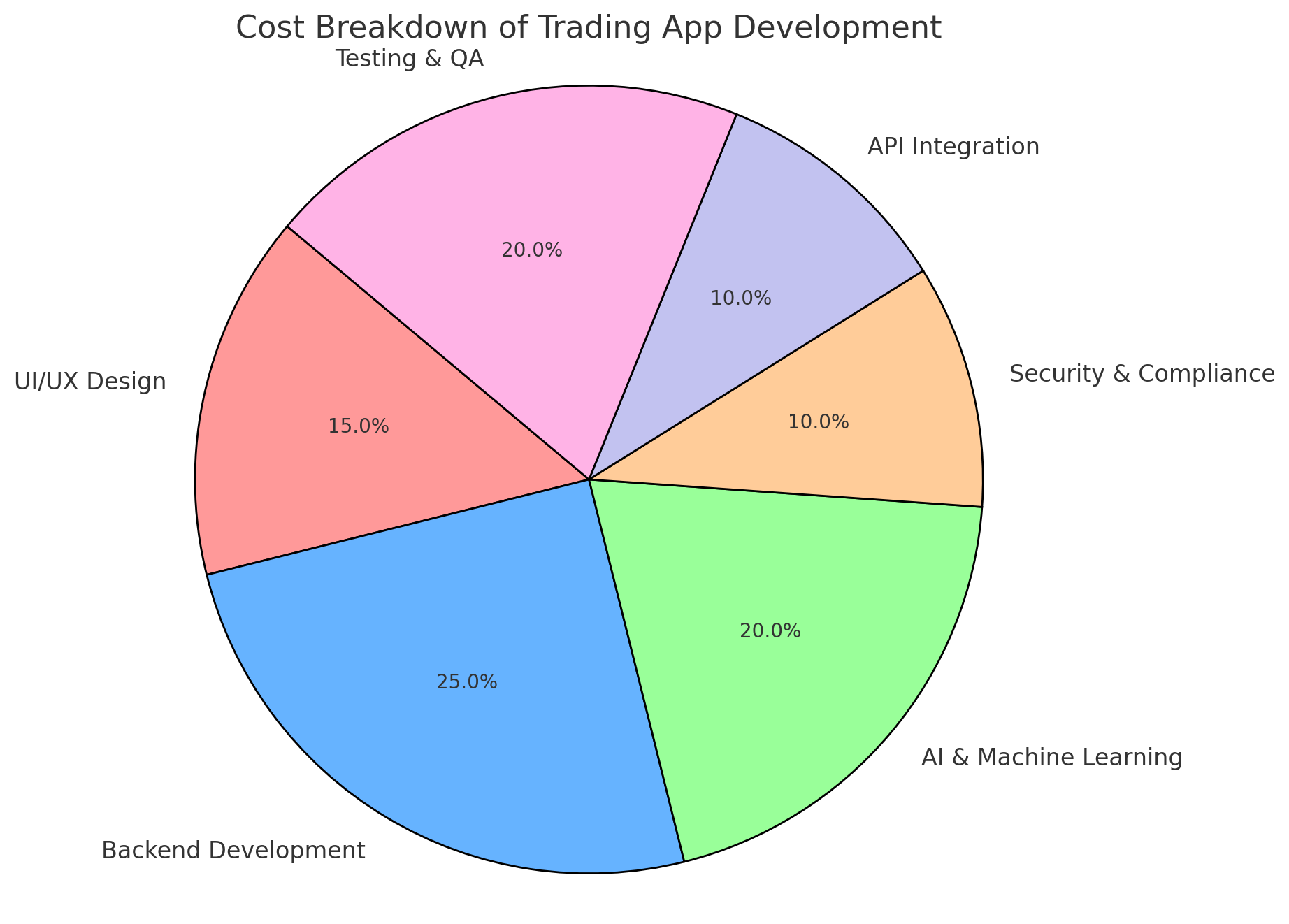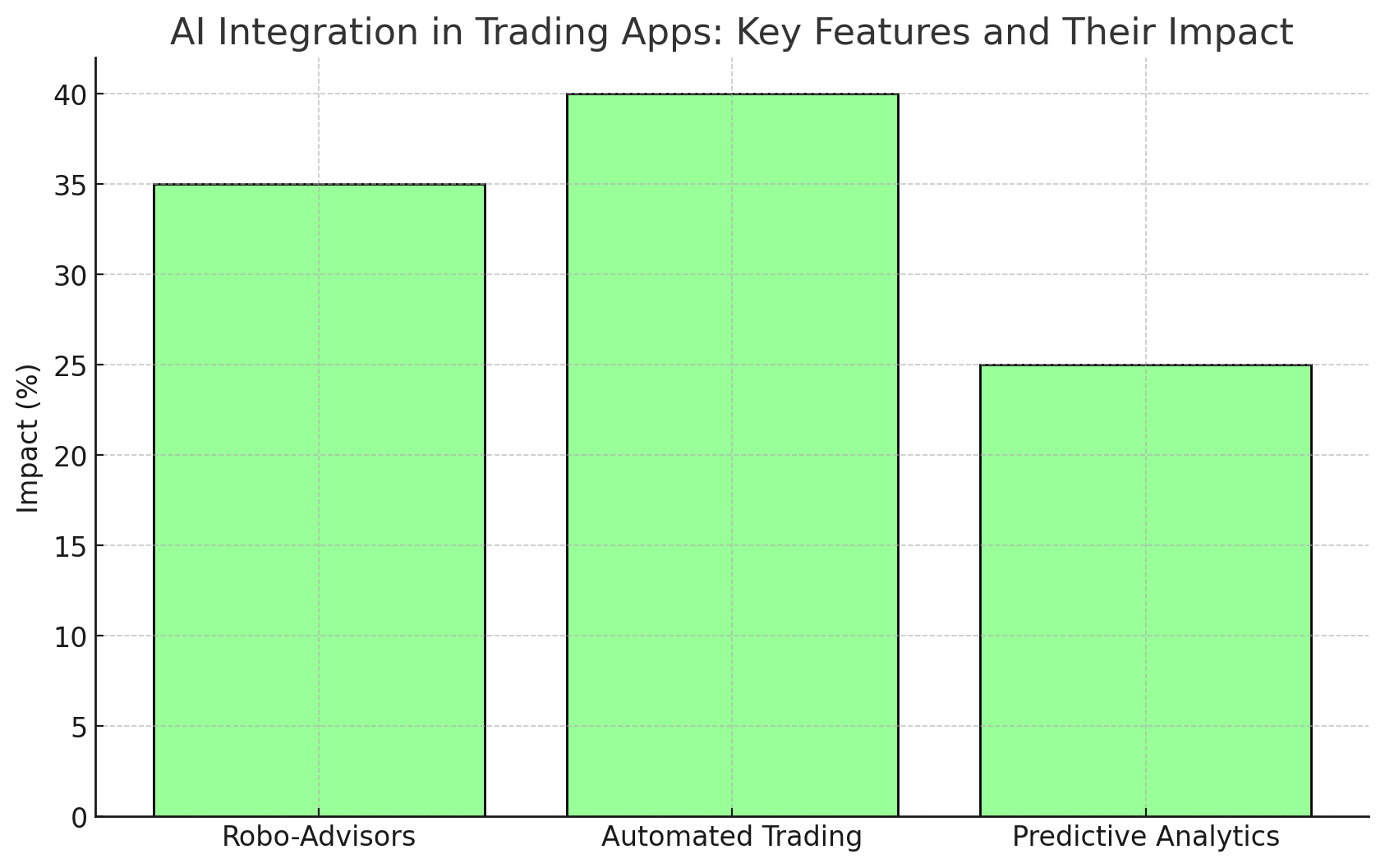The development of a trading app is a complex yet rewarding endeavor. Financial institutions and fintech startups are increasingly turning to mobile and web-based platforms to provide seamless trading experiences for users. However, balancing trading app development costs while ensuring a robust user experience (UX), compliance, and the integration of cutting-edge technologies like AI can be challenging.
In this article, we’ll explore the key components of trading app development, discuss the primary cost drivers, and provide strategies to reduce costs without compromising on essential features or security.
Key Factors Driving Trading App Development Costs
The cost to develop a trading app depends on multiple variables, including the complexity of features, the level of security, compliance requirements, and technology integrations. Here’s a breakdown of the major cost drivers:
| Cost Factor | Description | Estimated Cost |
|---|---|---|
| App Complexity | Basic apps with limited features are less expensive, while advanced apps with AI and analytics cost more. | $30,000 – $200,000 |
| UI/UX Design | A well-designed interface and user-friendly experience can raise the cost but ensure high engagement. | $10,000 – $20,000 |
| Backend Development | Secure servers, APIs, databases, and real-time data management. | $15,000 – $50,000 |
| AI and Machine Learning | Advanced AI features like robo-advisors and automated trading increase costs significantly. | $25,000 – $100,000 |
| Security & Compliance | Costs related to encryption, multi-factor authentication, and regulatory adherence. | $10,000 – $30,000 |
| API Integration | Integrating with stock exchanges, payment providers, and identity verification services. | $5,000 – $15,000 |
| Testing & Quality Assurance | Ensuring the app is secure, bug-free, and user-friendly on various devices. | $5,000 – $15,000 |
How to Reduce Trading App Development Costs
To minimize trading app development costs, companies should focus on the following strategies:
1. Prioritize an MVP (Minimum Viable Product)
Building a full-fledged trading app from the start is expensive. Instead, focus on developing an MVP that includes the essential features. An MVP allows you to:
- Launch the app quickly to gather user feedback.
- Reduce initial development time and cost.
- Scale later with advanced features based on user demands.
| Feature Category | MVP Features | Advanced Features |
|---|---|---|
| Trading Functionality | Buy/sell stocks, view portfolios | Automated trading, real-time analytics |
| Security | Basic encryption, password protection | Multi-factor authentication, biometrics |
| Notifications | Simple alerts for transactions | AI-driven, personalized notifications |
2. Leverage Ready-Made APIs
Instead of building all functionality from scratch, integrate existing APIs for stock market data, payment processing, and identity verification. Popular APIs include:
- Alpaca for stock trading
- Apex Clearing for clearing and settlement
- Plaid for payment and bank account integration
By using pre-built APIs, you reduce development time and associated costs.
3. Outsource Development
Outsourcing the development to regions with lower labor costs can drastically reduce the total expense. Developers in countries like India or Eastern Europe provide high-quality service at a fraction of the cost of U.S.-based developers. It’s critical to vet development partners carefully to ensure quality, communication, and security standards are met.
4. Focus on Core Features
Avoid adding unnecessary features early on. While additional features like advanced charting, social trading, or predictive analytics are valuable, they can drive costs higher. Start with basic functionality and add features as the app scales.
5. Use Cross-Platform Development Tools
Instead of building separate apps for iOS and Android, consider using cross-platform frameworks like Flutter or React Native. These tools allow developers to build one app that works on multiple platforms, reducing both time and cost.
6. Adopt Cloud-Based Solutions
Building and maintaining your own server infrastructure is expensive. Instead, opt for cloud-based solutions (like AWS or Google Cloud) that offer scalable and flexible backend services. Cloud providers also offer built-in security and compliance features, which can reduce overhead in those areas.

The Role of AI in Trading Apps
Artificial Intelligence (AI) is becoming a critical component in the development of advanced trading apps. While AI features can be costly, they greatly enhance user experience by providing:
- Robo-Advisors: AI-powered advisors that provide personalized investment strategies.
- Automated Trading: Algorithms that execute trades based on pre-set conditions, improving speed and efficiency.
- Predictive Analytics: AI helps users analyze stock market trends and make informed investment decisions.
However, these features are costly to implement, so consider introducing them in later development stages after the MVP proves successful.
Compliance and Security: Essential but Costly
In the U.S., trading apps must adhere to strict regulatory requirements, such as FINRA, SEC, and GDPR (for users based in Europe). Ensuring compliance can be expensive, especially as it involves legal consultation, secure data management, and continuous monitoring.
Security Must-Haves
- Encryption: Data must be encrypted at rest and in transit.
- Multi-Factor Authentication (MFA): To ensure secure user logins.
- Fraud Detection: Use AI to monitor for fraudulent activities.
- Data Privacy: Follow GDPR and other data protection regulations.

Conclusion
Developing a trading app involves significant costs driven by features, security, compliance, and advanced technologies like AI. However, by focusing on cost-cutting strategies such as building an MVP, leveraging APIs, outsourcing development, and using cross-platform tools, you can optimize your trading app development costs.
By balancing costs with critical UX, security, and compliance requirements, you can create a scalable, user-friendly trading platform that meets modern investor demands without overshooting your budget.
This article outlines how to develop a competitive and cost-efficient trading app while keeping user experience and security at the forefront. It also highlights practical steps to reduce expenses and streamline the development process.
FAQ
How much does it cost to develop a basic trading app?
The cost of developing a basic trading app with essential features like stock tracking and simple trades can range between $30,000 and $75,000. This can vary depending on the development team, location, and specific requirements.
What features increase the development cost of a trading app?
Advanced features such as AI-powered robo-advisors, automated trading, and real-time predictive analytics significantly increase the cost. Other costly features include multi-factor authentication, real-time portfolio management, and regulatory compliance.
How can I reduce the development cost of a trading app?
To reduce development costs:
- Focus on an MVP (Minimum Viable Product) with core features.
- Leverage third-party APIs for functionalities like stock data, payment gateways, and user authentication.
- Outsource development to countries with lower labor costs.
- Use cross-platform tools like React Native to build for iOS and Android simultaneously.